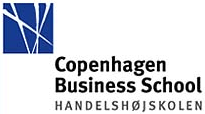No 2000-9: Electronic Commerce and Document Interchange: EDI Applications in Denmark
Kim Viborg Andersen, Niels Christian Juul, Niels Bjørn-Andersen and Deborah Bunker
Additional contact information
Kim Viborg Andersen: Department of Informatics, Copenhagen Business School, Postal: Department of Informatics, Copenhagen Business School, Howitzvej 60 , DK-2000 Frederiksberg, Denmark
Niels Christian Juul: Department of Informatics, Copenhagen Business School, Postal: Department of Informatics, Copenhagen Business School, Howitzvej 60 , DK-2000 Frederiksberg, Denmark
Niels Bjørn-Andersen: Department of Informatics, Copenhagen Business School, Postal: Department of Informatics, Copenhagen Business School, Howitzvej 60 , DK-2000 Frederiksberg, Denmark
Deborah Bunker: SISTM University of NSW Australia
Abstract: This paper analyses trends in EDI messaging in Denmark. Between 1995 and 1999,
there has been a sharp increase in the number of companies capable of sending and
receiving EDI messages as well as an increase in the number of EDI messages trans-
mitted. The major part of the increase is attributed to the health sector. Most of the
companies analysed within this paper only apply browser-EDI in business-to-business
trade to a limited extent. This analysis highlights the potential for expanding the EDI
traffic by its integration with ERP systems within Danish companies (ORACLE, SAP/R3,
Concorde and Navision) and also indicates the large potential for EDI growth and
application within the public sector. It is believed that this data highlights and represents
significant trends in EDI applications solutions within the Danish marketplace both
now and in the future.
Keywords: EDI messaging; Denmark; ERP Systems; Networks; IT industry
24 pages, August 1, 2000
Full text files
6494
- Copenhagen Business School, Department of Informatics
- Ordering Working Papers
- Home page for this series
Questions (including download problems) about the papers in this series should be directed to Lars Nondal ()
Report other problems with accessing this service to Sune Karlsson ().
RePEc:hhs:cbsinf:2000_009This page generated on 2024-09-13 22:14:15.

